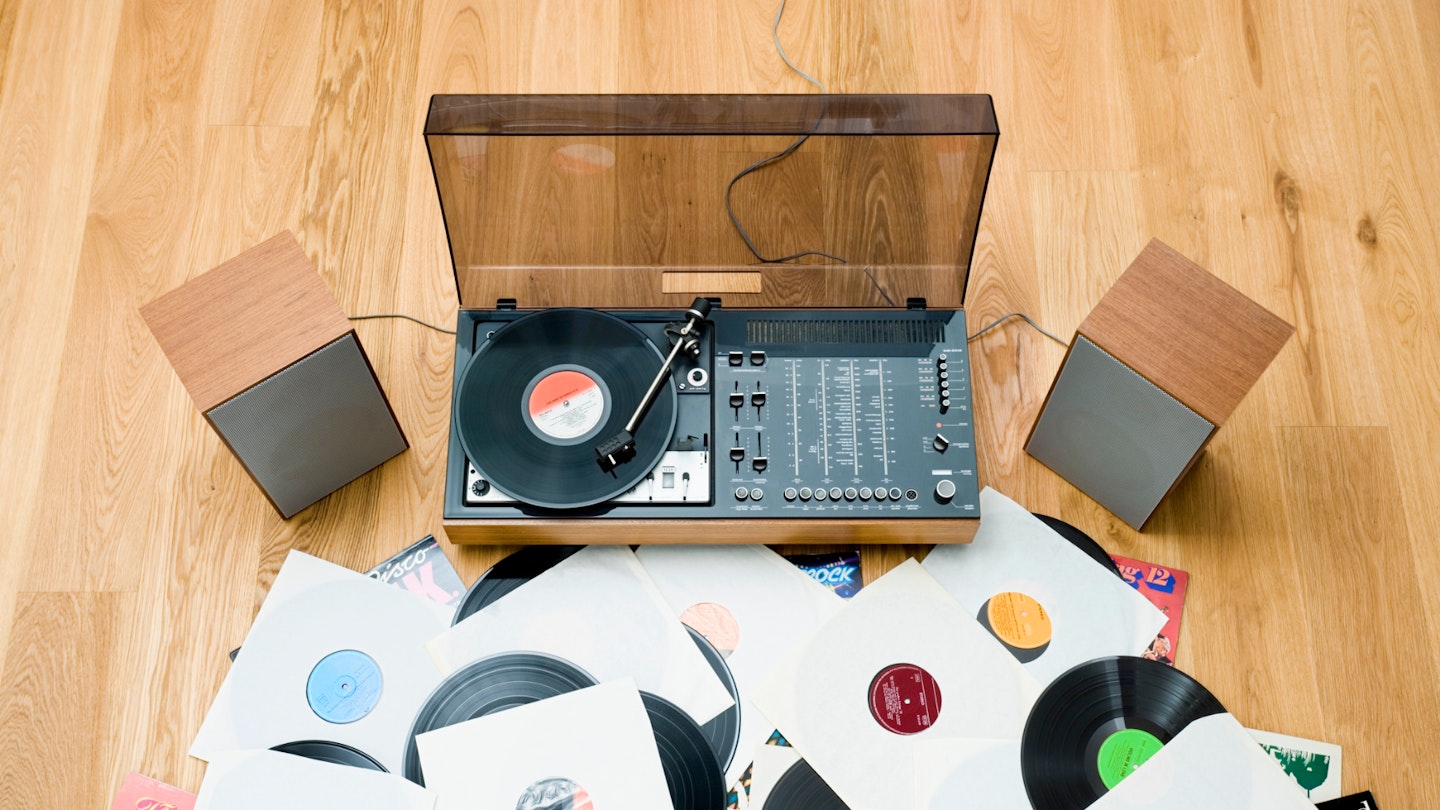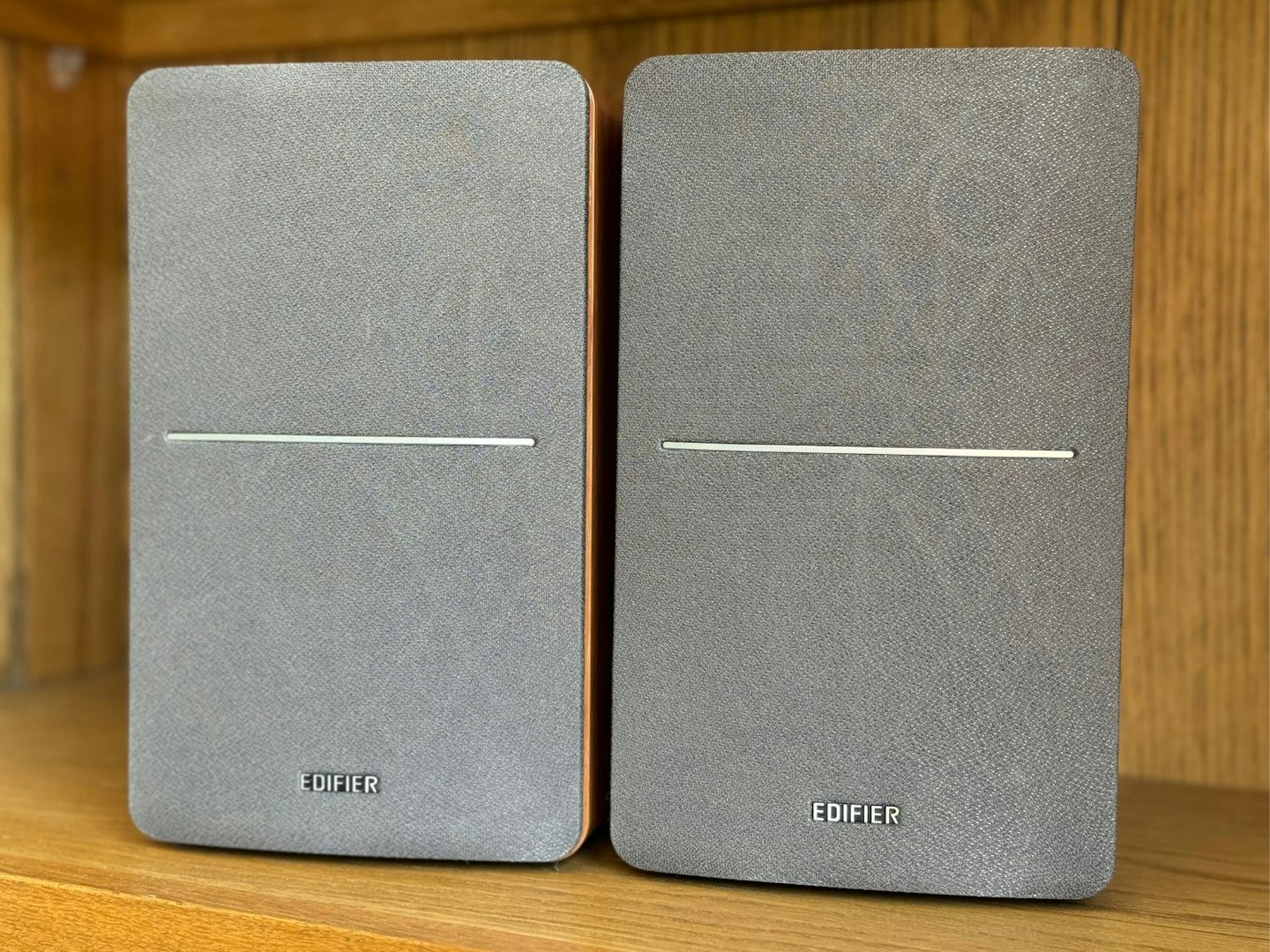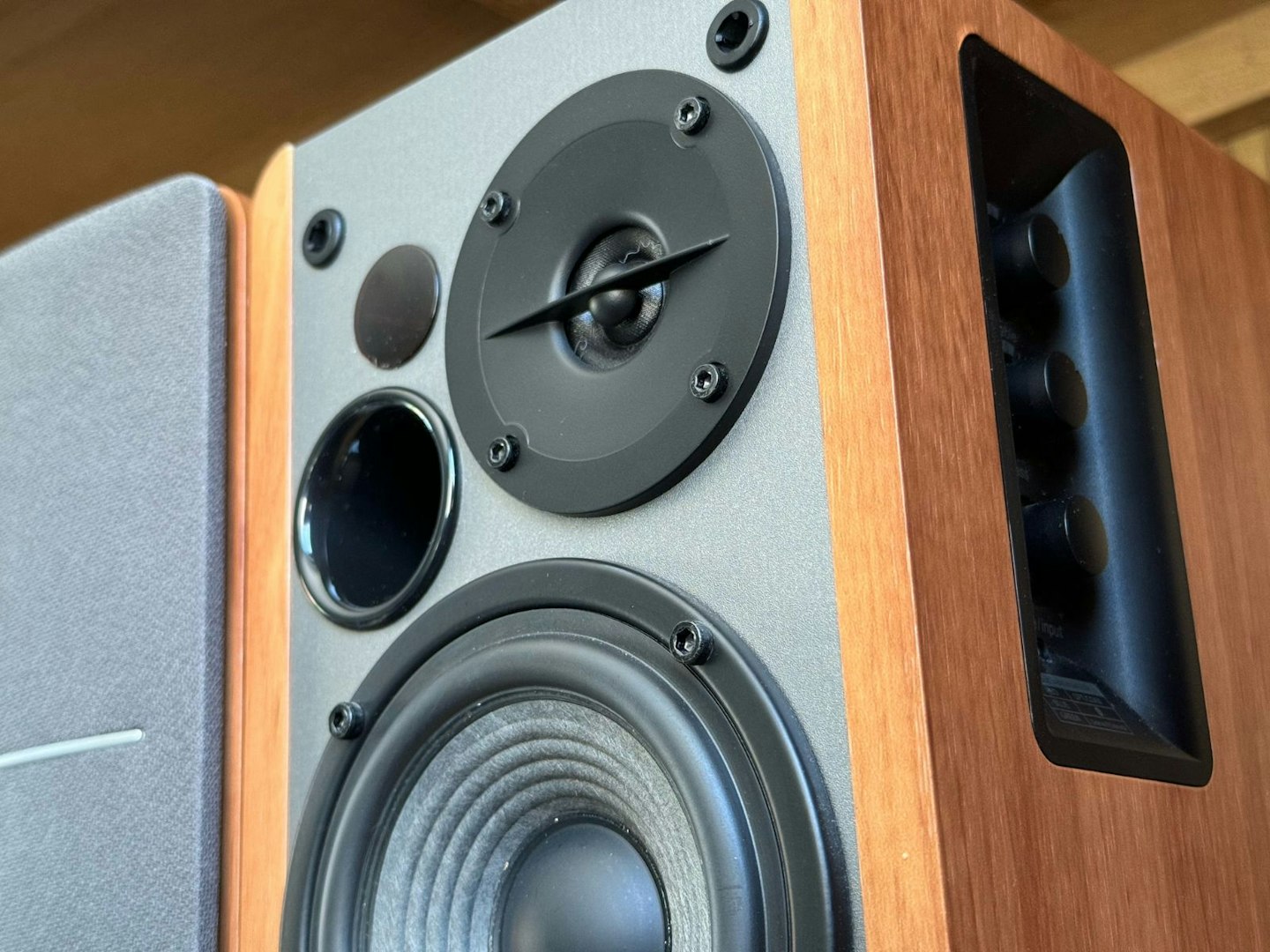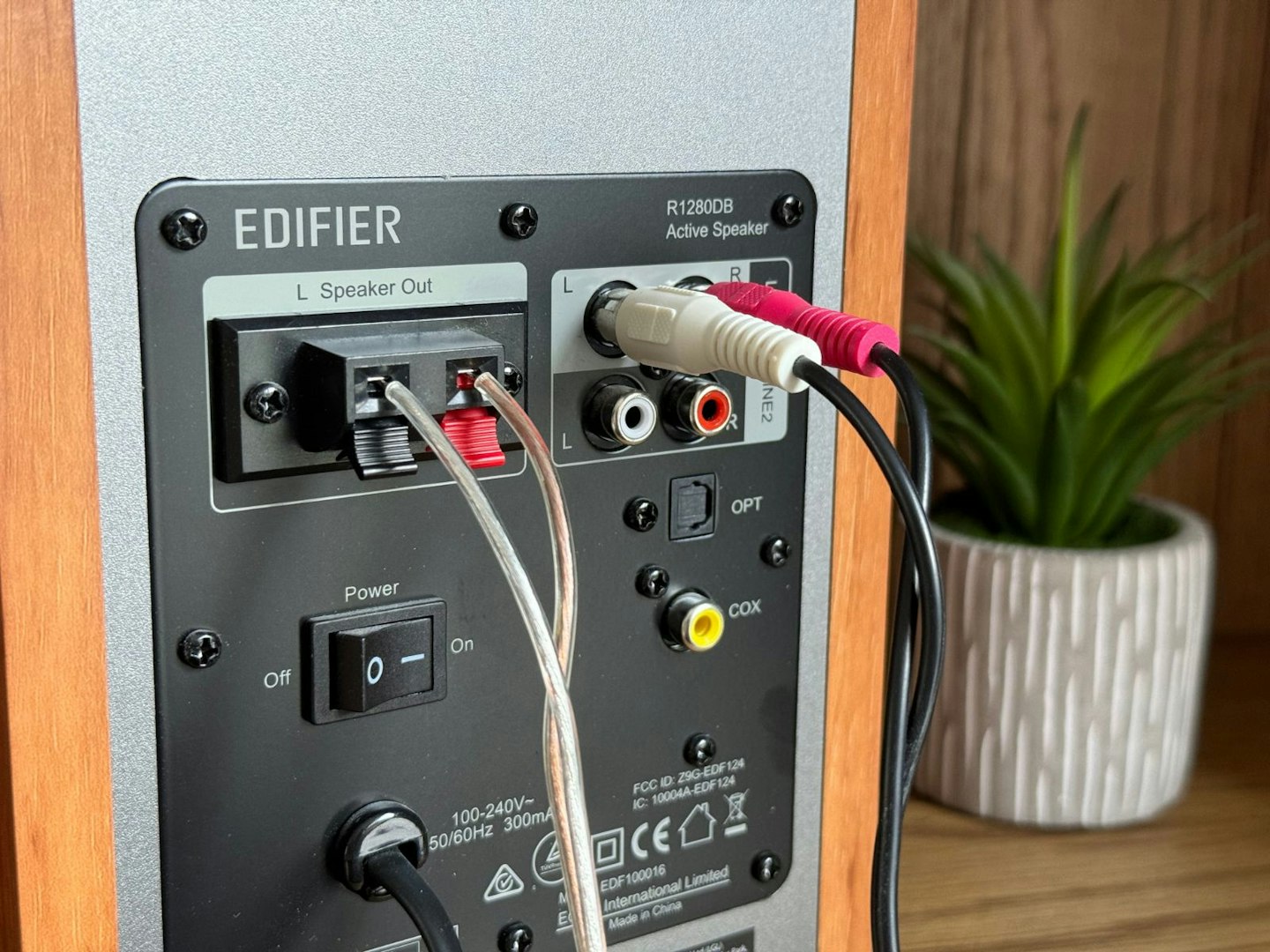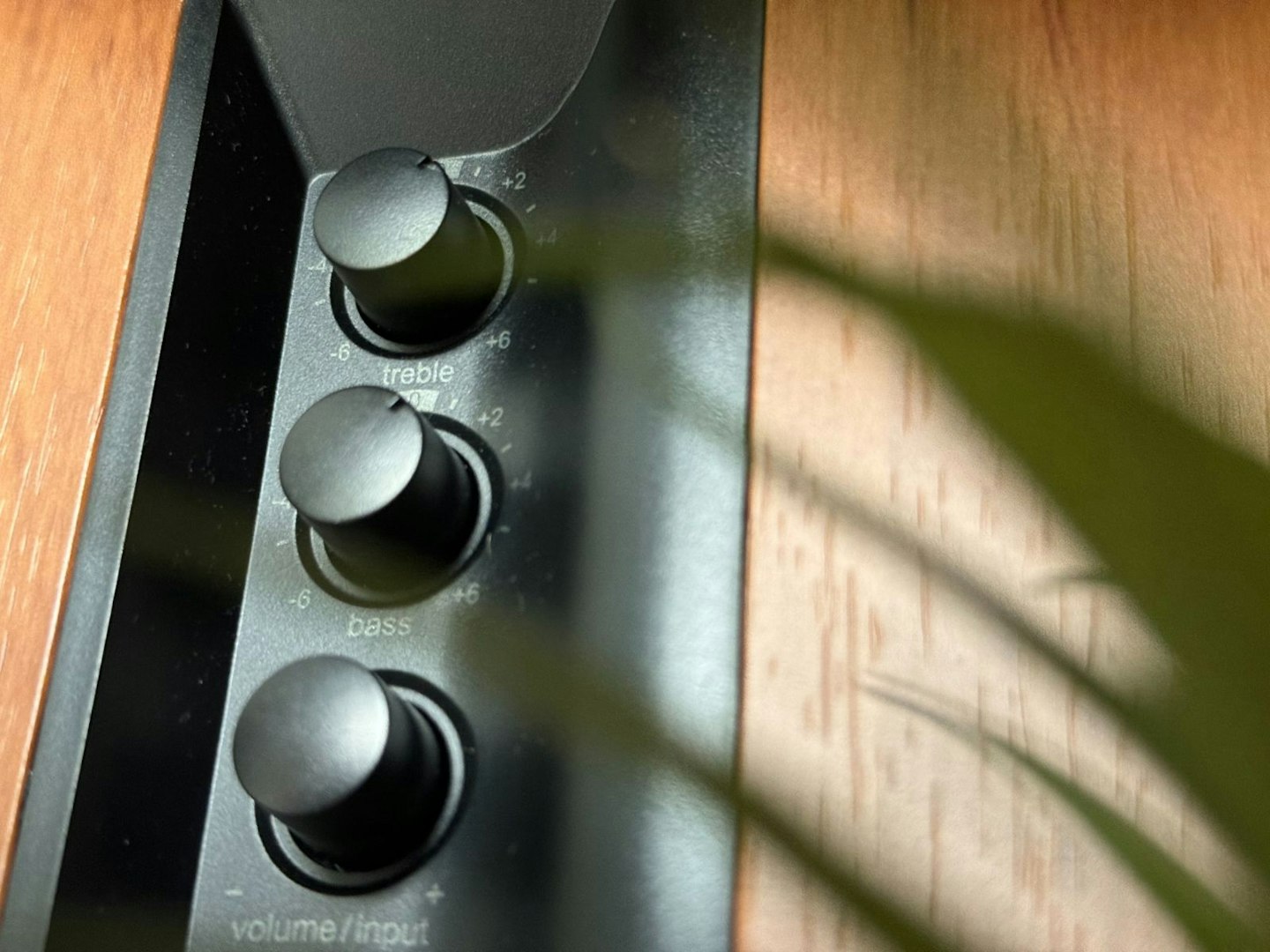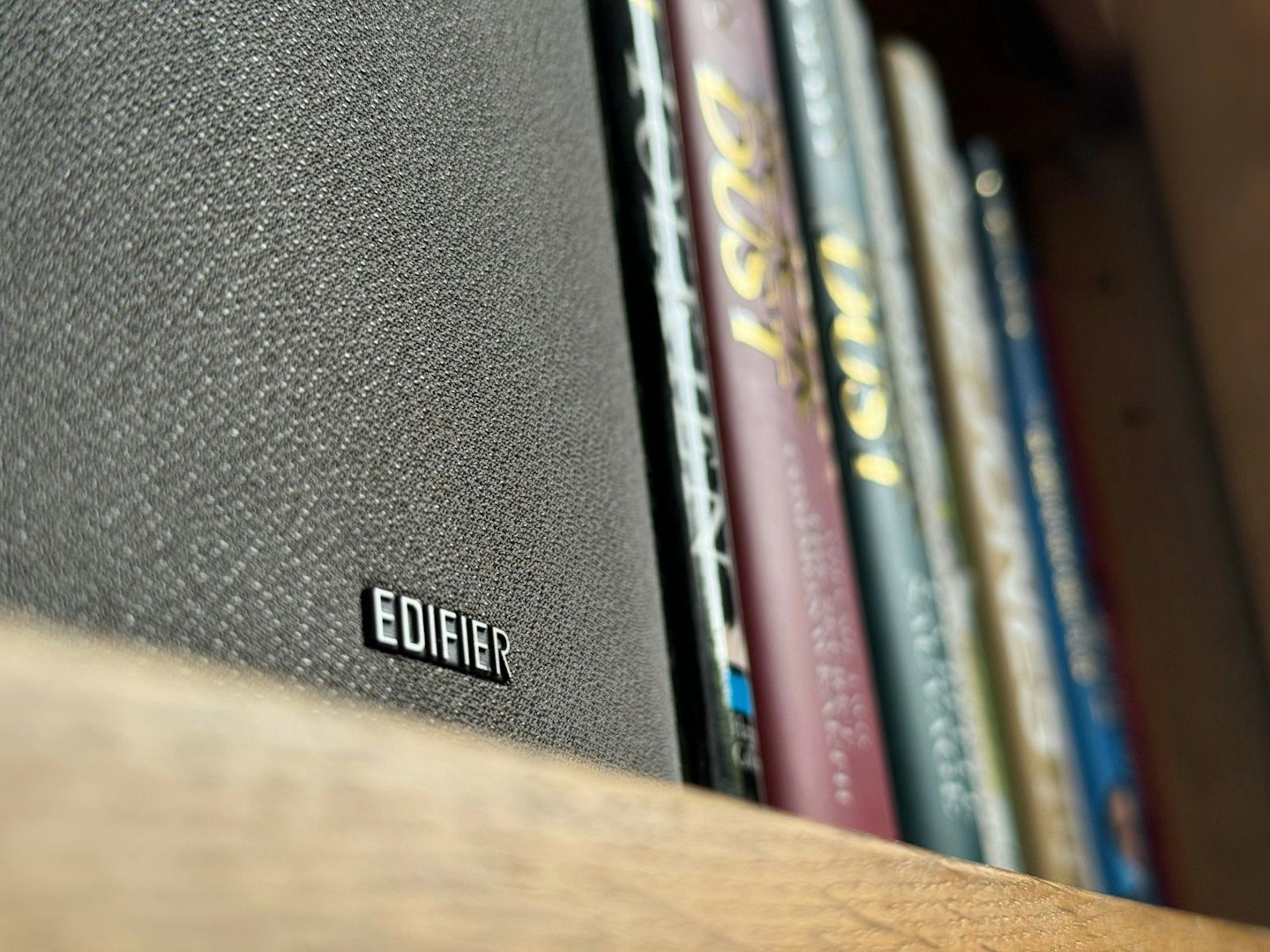Bookshelf speakers might sit neatly at each end of a row of novels, but that doesn't mean they have to sound small – in fact, they are some of the best speakers on the market. If you're a dedicated music fan, you know the importance of a good quality set of hi-fi speakers, and finding the best bookshelf speakers is no exception. They're an ideal fusion of style and power for anyone with limited space or those who like to keep things simple.
As you'd imagine, 'bookshelf' refers to the general dimensions of the speaker, as they're the ideal size for tucking into corners or perching at the end of furniture. Perfect for small and medium rooms, high-quality speakers can effortlessly fill your space with wide and detailed sound. We'll also take a look at the best way to wire up your bookshelf speakers to make sure they deliver that satisfying stereo effect you've been looking for. But first, we've put together our pick of the best to really bring your hi-fi to life.
The best bookshelf speakers of 2025
So, why invest in bookshelf speakers when you probably have some old ones kicking around in the loft? Surely that pair of trusty Technics that came with your expensive midi system will do the trick? Or how about that impressive Denon soundbar we reviewed? Well, they'll probably be 'okay' – but that's it. The best bookshelf speakers are built and engineered differently to pack big sounds into a small box. Some of the best speakers for vinyl record players are bookshelf speakers, and for good reason. They elevate the listening experience and reveal new layers of your music, adding space for previously unnoticed intricacies and details.
As with most decent hi-fi kits, there's a lot of choice out there. And yes, for those with deep enough pockets, it's always easy to spend in excess of £1000 and be done with it. But unlocking the hidden potential of your music collection doesn't have to break the bank. We're recommending the best bookshelf speakers to deliver an incredible listening experience, with options for everyone – from entry-level to experienced audiophiles.
The best bookshelf speakers
Best overall bookshelf speaker
The Edifier R1280T is a great set of bookshelf speakers, offering up a tight, punchy audio and a clean and classic look. If you're looking to listen to music in a small-to-medium room, they will certainly provide ample volume and pleasing detail courtesy of the 4-inch bass driver and 0.5-inch tweeter.
The sound profile can be adjusted from the treble and bass EQ controls, and volume is controlled by either the onboard control or remote control. As active speakers, they don't require an external amplifier and can be hooked up to a turntable, stereo, or computer with ease – all the required cables are included. And if you're all about the vinyl experience, check out our buyer's guide to record players to make sure you find the turntable that's right for you. The Edifier R1280T speakers are well worth considering, whether or not you're on a tight budget. Also available with Bluetooth and digital inputs as the R1280DB.
Pros
- Very well engineered
- Active speakers ideal for those without a separate amp
- Excellent bass
- Side panel with manual control knobs
- Sophisticated looks
Cons
- Included cables are a little cheap
| Sensitivity | 85dB |
| Frequency response | 75Hz-18kHz |
| Impedance | 8 Ohms |
| Recommended amplifier power | N/A |
| Drivers | 4" (100mm) cone woofer, 0.5" (13mm) dome tweeter |
| Dimensions (HxWxD) | 234 x 146 x 196mm (9.2 x 5.7 x 7.7 in) |
| Weight | 4.9kg |
Best budget bookshelf speakers
Yamaha's NS-BP182 bookshelf speakers are remarkably loud and we're talking generally, not just about their size. The 4.75-inch woofer and 1.25 tweeter are exciting to hear, being capable of providing deep, kicking bass and powerful highs.
Audiophiles will certainly want to play around with their amplifier settings to get the most out of them, but the layering and quality of the audio is something to cherish. They're elegant too, with a piano black offering up something a little different from the typical wooden finishes.
Pros
- Very affordable for speakers from this brand
- Small enough to fit anywhere
Cons
- Design a little plain
- Bass response is slightly lacklustre
| Sensitivity | 83dB |
| Frequency response | 60Hz-40kHz |
| Impedance | 6 Ohms |
| Recommended amplifier power | 40-110 watts |
| Drivers | 4.75" (120mm) cone woofer, 1.18" (30mm) dome tweeter |
| Dimensions (HxWxD) | 279 x 154 x 230mm (10.68 x 6 x 9 in) |
| Weight | 3.3kg |
The Edifier R1280DB bookshelf speakers offer reliable and smooth Bluetooth connectivity, optical and coaxial inputs, and Edifier's brilliant, signature wood grain design. They're a fantastic choice for casual listeners and vinyl enthusiasts alike, with clear, balanced audio and multiple input options. So, whether you're streaming wirelessly over Bluetooth or plugging into a turntable or computer setup, these speakers promise impressive sound without breaking the bank.
Tried and tested by tech expert Harvey Isitt, he said: "I ran these speakers through everything (vinyl, streaming, TV), and they handled it all with ease. Michael Kiwanuka's warm, soulful voice sounded rich, The Strokes' guitars were crisp with clear vocals, and even IDLES' gritty bass came through clean. The built-in EQ knobs are a nice touch, though I wish the remote offered the same control. Occasional Bluetooth quirks aside, this is a budget-friendly speaker that punches well above its price point."
You can read Harvey's full Edifier R1280DB review here.
Pros
- Well-balanced audio with solid bass and clear highs
- Multi-connectivity options, including Bluetooth, optical, and RCA
- Sleek wooden finish complements any space
Cons
- Occasional Bluetooth connectivity issues
| Sensitivity | ≥ 85dB(A) |
| Frequency response | 55Hz - 20kHz |
| Impedance | Unspecified |
| Recommended amplifier power | 42W RMS |
| Drivers | (per speaker) 4" bass driver, 13mm silk dome tweeter |
| Dimensions (HxWxD) | 154 x 241 x 189 mm |
| Weight | 4.3kg (per speaker) |
Newly released, Majority has stepped up its game with these speakers, boasting 100W power with 5.3 Bluetooth for room-filling sound. The Xtra Bass and HD-grade sound from its three attuned drivers add great depth and clarity to your music listening or gaming sessions. You also get a premium-feeling remote for easy navigation between tracks and personalised EQ settings. The rest of the design and build quality is perhaps not as premium as other options at a slightly higher price point, but there is a lovely wood grain finish.
Tried and tested by tech expert Harvey Isitt, he said: "When I played The Weeknd's latest record, 'Hurry Up Tomorrow', the speakers brilliantly distributed the sound across my room whilst not sounding harsh at especially high volumes. It likewise handled the gritty bass of IDLES' 'Crawler' with ease.
"That said, while the clarity was great it perhaps lacked the precision I found when reviewing Edifier's R1280DB bookshelf speakers. Still, it outperformed it on the Bluetooth front, its connection being much less finicky and far quicker and stronger. All considered, it's an excellent speaker set for just over £100."
Pros
- Very solidly built cabinets
- Well-engineered crossovers for wide and accurate soundstage
- Huge power for speakers this compact
Cons
- Not active – requires a separate amplifier
| Sensitivity | Unspecified |
| Frequency response | 50Hz-60Hz |
| Impedance | Unspecified |
| Recommended amplifier power | 100W |
| Drivers | 3 |
| Dimensions (HxWxD) | 170 x 182 x 275 mm |
| Weight | 6.8kg |
Best mid-budget bookshelf speaker
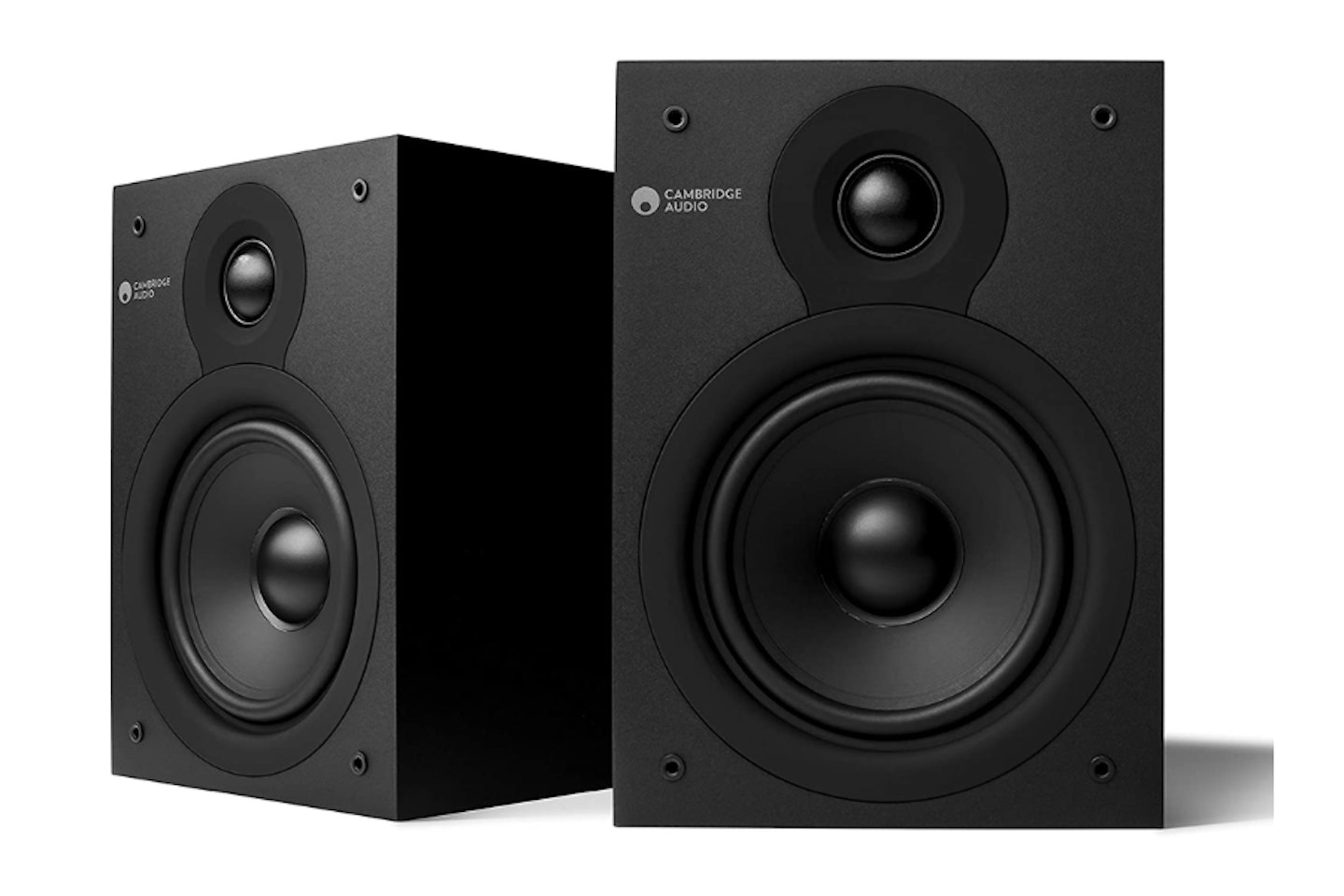
Cambridge Audio has lived up to its reputation with the SX-50 bookshelf speakers. Don't be fooled by their diminutive stature because the hi-fi soundstage delivered by the 5.25-inch woofer and 1-inch silk dome tweeter is seriously impressive. The audio is punchy and clear, with the bass being well-balanced and the highs singing cleanly, even when peaking at top volumes. Most importantly, they make tracks you've heard dozens of times before sound fresh and layered.
These also look the part as well, with a very classy exterior finish to contain all of that finely-tuned finessed audio power. A worthy addition to a small room setup.
Pros
- Very solidly built cabinets
- Well-engineered crossovers for wide and accurate soundstage
- Huge power for speakers this compact
Cons
- Not active – requires a separate amplifier
| Sensitivity | 87dB |
| Frequency response | 50Hz-22kHz |
| Impedance | 8 Ohms |
| Recommended amplifier power | 10-100W |
| Drivers | 5.25" (135mm) treated paper cone woofer, 1" (25mm) Silk dome tweeter |
| Dimensions (HxWxD) | 225 x 161 x 240mm (8.9 x 6.3 x 9.4 in) |
| Weight | 3kg |
Best compact bookshelf speaker

Q Acoustics pulled a lot of serious sound science together in the 3010i Compact speakers. Using 22mm tweeters and fibre/paper cones for the 4-inch bass unit, these mighty little cabinets have been updated from the previous version. They're now 25 per cent bigger, with internal bracing to keep the stereo image nice and focussed.
Along with the larger two-way reflex enclosure cabinets come uprated audiophile crossover components too. The accuracy of the audio these speakers generate will stop you in your tracks; the bass is powerful, the mids wide-open, and the highs beautiful. Whether hooked up to a hi-fi or home cinema system, they won't let you down.
Pros
- Very solidly engineered cabinets
- Excellent crossovers for wide and accurate soundstage
- Compact and slim, with low-profile connections
Cons
- Bass addicts may want to add a sub for extra depth
| Sensitivity | 86dB |
| Frequency response | 65 Hz – 30 kHz |
| Impedance | 6 Ohms |
| Recommended amplifier power | 50-125W |
| Drivers | 2-way Reflex, Bass Driver: 100mm (4"), Tweeter: 22mm (0.9") |
| Dimensions (HxWxD) | W150mm x H253mm x D252mm |
| Weight | 4.1kg |
7.
Mission LX-2 MkII
Best stand-mountable bookshelf speaker
Mission states that it stripped things back to basics when building the LX range, first and foremost focusing on the fundamentals of sound engineering. The LX-2 MkII's particular technical highlight is Mission's Inverted Geometry Drive Design - the 1-inch tweeter is mounted below the 5-inch mid/bass driver to improve 'time alignment' (a process of delayed input signals to ensure sound arrives at the same time).
This combined with a sturdy resonance-control build ensures a dynamic, clear, and balanced sound stage full of power and punch. There are some other exciting colour options to be found too. Last but certainly not least we have optional Mission stands for those who prefer to keep their bookshelves clear. They're engineered to be the right match for the LX-2 MkII speakers.
Pros
- Lots of innovative audio tech
- Superb clarity for mid and treble
- High-quality Mission build and design
- Well-designed optional stands
Cons
- The soundstage may be a little constrained at higher volumes
| Sensitivity | 87dB |
| Frequency response | 65 Hz – 30 kHz |
| Impedance | 8 Ohms |
| Recommended amplifier power | <span style="font-size: revert; font-family: inherit; font-weight: inherit; color: initial;">20-100W</span> |
| Drivers | 5" bass driver and a 25mm microfibre dome tweeter |
| Dimensions (HxWxD) | 305 x 200 x 258mm |
| Weight | 6.34kg |
Best low-budget bookshelf speaker for audiophiles
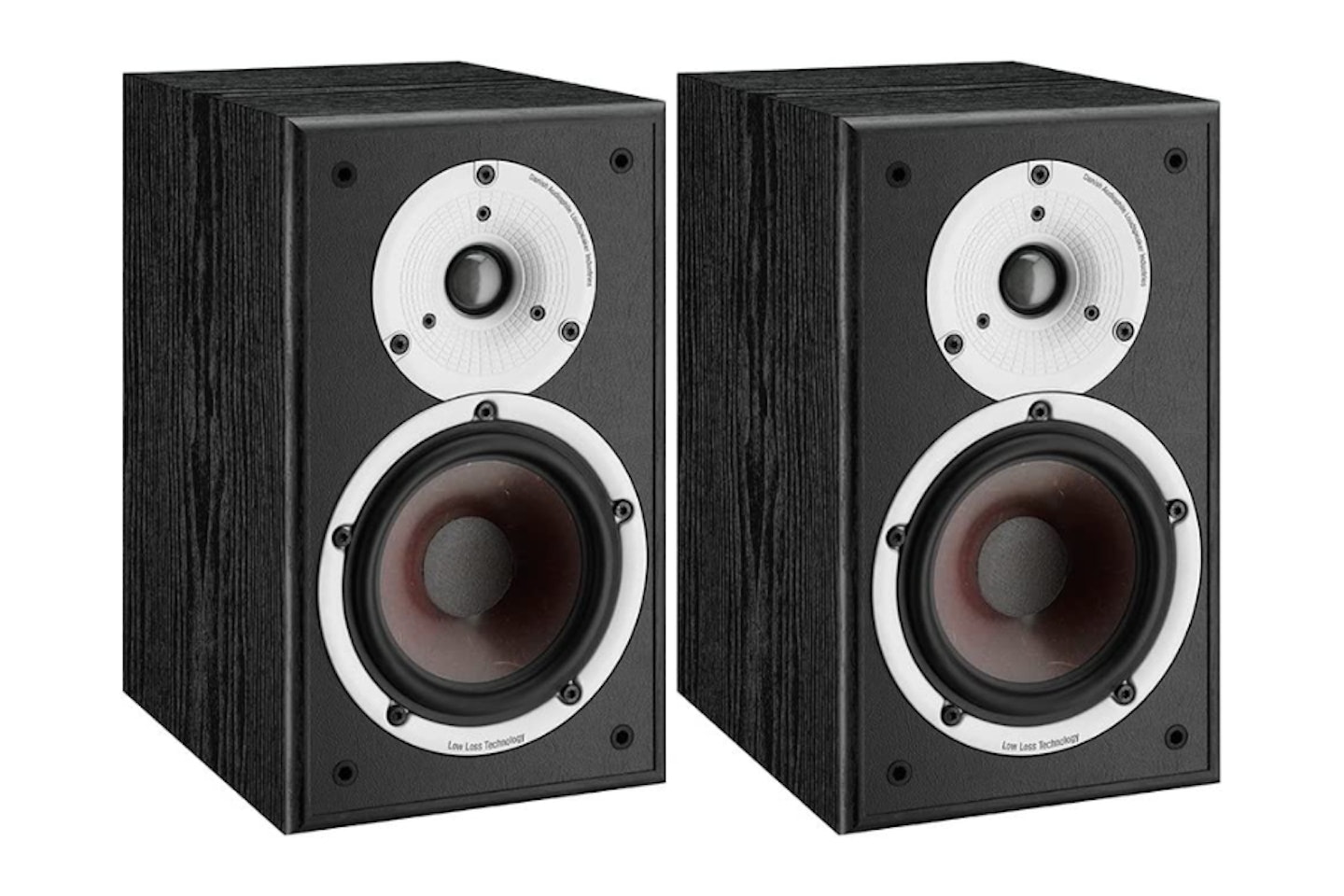
DALI is one of those brands that consistently delivers a quality of sound that many put into the much-lauded 'audiophile' category. The Spektor 2 boasts more than enough bass to fill a small to medium-sized room and is even flexible enough to take on the role of front speakers in a home cinema setup. This is, in part, due to the larger diaphragm areas of the 130mm bass/mid driver and the 25mm dome tweeter.
The result is an exceptionally spacious sound that avoids audio distortion caused by colliding harmonics. It does this by design, which is why DALI say that its speakers should not be angled inwards towards the listening position. One extra advantage of this is that they look great on the shelf or wall, thanks to not needing to be fixed at an angle.
Pros
- Legendary sound from an equally legendary brand
- Excellent room-filling bass and mids
- Wide sound dispersion
- Includes wall brackets
Cons
- Will need 'running in' for 100 hours to sound their best
| Sensitivity | 84.5dB |
| Frequency response | 54 - 26,000 Hz |
| Impedance | 6 Ohms |
| Recommended amplifier power | <span style="font-size: revert; font-family: inherit; font-weight: inherit; color: initial;">25-100W</span> |
| Drivers | 130 mm bass/midrange driver and 25 mm dome tweeter |
| Dimensions (HxWxD) | 292 x 170 x 238 mm |
| Weight | 8.4kg |
Best affordable bookshelf speaker for audiophiles
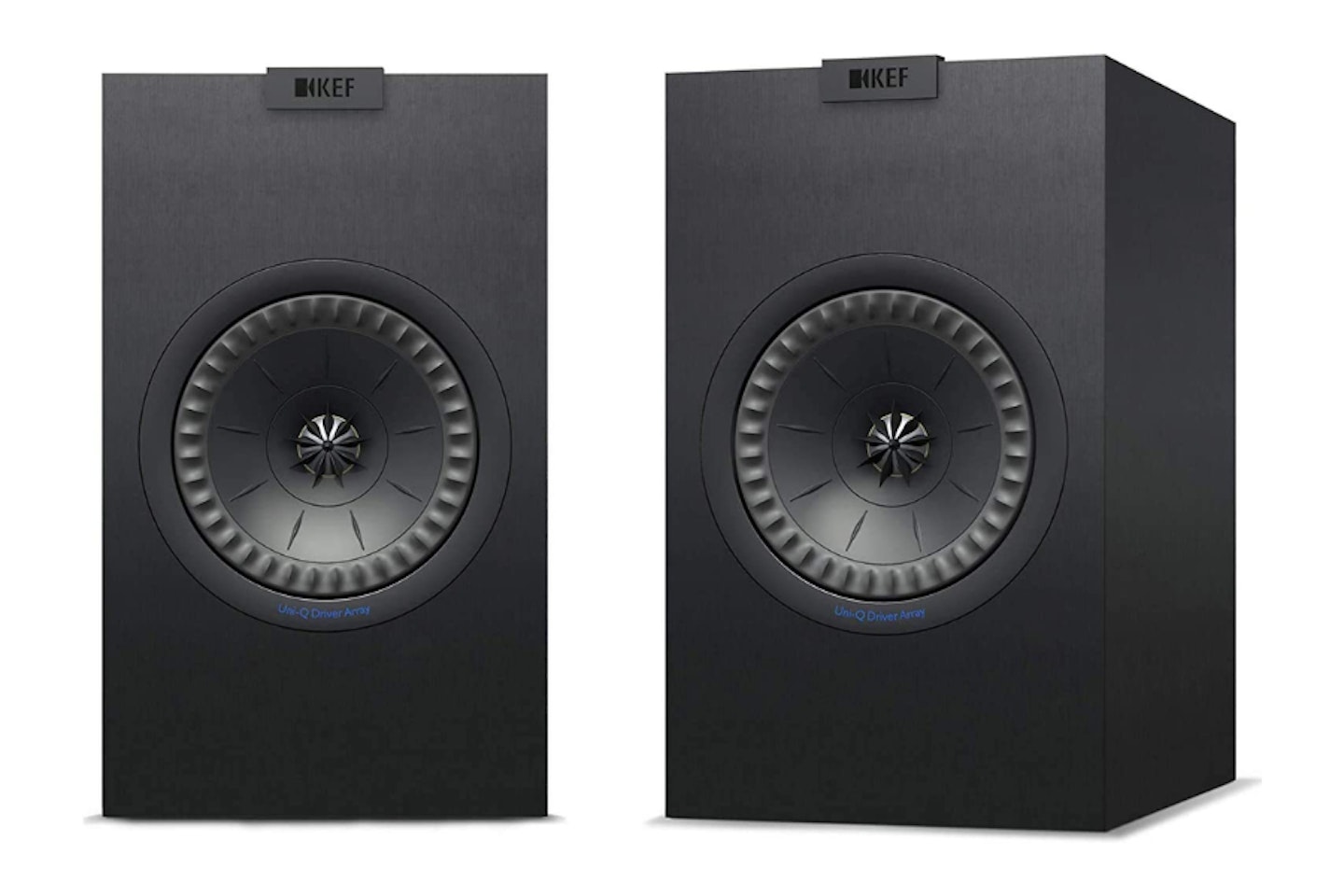
No speaker review would be complete without a showing from audio legends KEF. When you buy from this brand you're pretty much assured a stellar performance all-round. These Q150 bookshelf speakers are very well received wherever they go, and this is really all down to the broad, deep and satisfying soundstage they create. The Uni-Q drive unit positions the treble towards the middle of the woofer, making for a more integrated single point of origin for the sound.
Of course, if you're thinking that all of this KEF engineering and design won't come cheap, you'd be right... But your music will sound exquisite through them.
Pros
- Incredibly well-priced for KEF speakers
- Stunning soundstage
- Beautifully refined design
Cons
- Bass-heavy music may need tweaking down at the source to preserve mids
| Sensitivity | 86dB |
| Frequency response | 51Hz - 28kHz |
| Impedance | 8 Ohms |
| Recommended amplifier power | 10-100W |
| Drivers | 5.25 in. Uni-Q Driver Array |
| Dimensions (HxWxD) | 11.92 inches x 7.08 inches x 10.944 inches |
| Weight | 6kg |
Buyer's guide
Always measure-up
It goes without saying that any piece of audio equipment needs to slot into the space available. But speakers are slightly more needy. Firstly, you'll need to measure your available shelf or unit or wall space. Then compare this with the speaker dimensions. Easy, right? Almost. However, one thing that trips up even the most seasoned hi-fi enthusiast is banana plugs or (in the case of active speakers) phono/RCA connectors. Depending on your speaker's cabinet design, your connectors may be inset or not. The result is that your banana plugs will stick out of the back of each speaker by some amount. So, if the depth of your shelf or unit is at a premium, make sure you factor in the depth of your connectors.
The positives and negatives of wiring
As with anything electrical, it's important not to get your wires crossed. Therefore, most speaker wire will come with one side marked with a line to help you match up the terminals on your amp with those on the speakers. So, one will be positive, the other negative. Always read the manual or study the labelling on your speakers to find out which is which; ignoring any colour coding on the terminals as this can sometimes vary. But why is this important?
Well, your speakers will route part of the audio signal to different areas of the speaker. Therefore, if you have a positive wire in the negative terminal and vice versa, some elements of the sound will effectively be working against each other. The result is poor stereo imaging and reduced bass. This is called being 'out of phase'. So, match up your positives and negatives and you'll be in phase and ready to rock.
Avoid cheap streaming speakers and TV soundbars
Yes, Bluetooth speakers and TV soundbars all have their place, but for a truly special listening experience, a decent set of bookshelf speakers will outperform them every time.
Active speakers aren't in themselves a bad idea, the thing that makes them 'active' is the inclusion of built-in power amplification - so you can hook your record player up to them and bypass the need for a separate amplifier altogether. But, more generally speaking, the kind of active speakers that people already own aren't built for hi-fi, they're smart speakers and all-in-one audio solutions for wireless streaming. You can still spend a lot of money on these pieces of kit, and they can sound incredible, but if you have an amplifier and hi-fi separates, we recommend a pair of bookshelf speakers that have been designed with that use in mind. This is true whether you stream your music to your amp from a PC or TV, or prefer to spin an LP for those warm analogue tones.
The best bookshelf speakers: FAQs
What’s an amplifier and do I need one?
An amplifier is a device that takes low-voltage audio input from your source equipment, typically a turntable or CD player, and amplifies that input. Your music is then output with enough power to drive an attached pair of speakers. Passive speakers, therefore, require an amplifier.
What's the difference between an active and a passive speaker?
The terms active and passive refer to the power that the speaker needs to function. Thus, an active speaker is one that has its own power supply and amplifier function. This means that you can hook up any sound source directly to the speakers, usually via an auxiliary input connection, such as an audio jack or twin phono plugs in the case of a record player. Because these speakers actively power themselves, they can amplify the music you pipe into them.
As you'd expect, a passive speaker has no active power or amplifier circuitry. So, you will need to route your sound to them via an external amplifier. Some speakers, like the Edifier R1280T listed above, are active speakers. They don’t require an external amplifier.
What is a driver?
A driver is a device inside any speaker, be it wired headphones or an external speaker, that converts electrical signals into sound. Larger drivers tend to be able to deliver a more powerful sound with greater accuracy. That said, this isn’t always the case, as build material quality also plays an important role. Drivers are talked about in terms of their diameter.
What are bass, midrange, and treble?
Bass, midrange, and treble are sometimes referred to as lows, mids, and highs. These terms refer to the different sound frequencies found in audio.
Bass, or low, is the boomier sections of sound, the frequencies that people can most often 'feel'. Without adequate bass, the audio will sound very empty and 'tinny'. Too much bass and music can sound rumbly, overpowering, and woolly.
Midrange, or mid, is all the stuff that happens in the middle - guitars, vocals, and speech. Balancing this with bass brings audio to life. If you struggle to hear vocals in music or conversation in podcasts, boosting the midrange can bring these out for you without having to play with volume.
Treble, or highs (hi), is higher frequencies. These are important for picking out details in audio, but if they are too high they can annoy and be painful to listeners.
Chris Duffill is a Senior Tech Writer and Reviewer for What's The Best, Empire, Yours, Closer, Heat and other brands. He specialises in home entertainment and audiovisual tech, including TVs, projectors, speakers, amplifiers, turntables and more.
Having worked in video production, photography and graphic design, he has decades of professional experience with various display technologies. He's owned TVs of various sizes and specs, several home cinema projectors and also set up his own surround sound systems, including Dolby Atmos. He's a lifelong TV and movie fanatic with a Masters in Screenwriting from the UEA.
